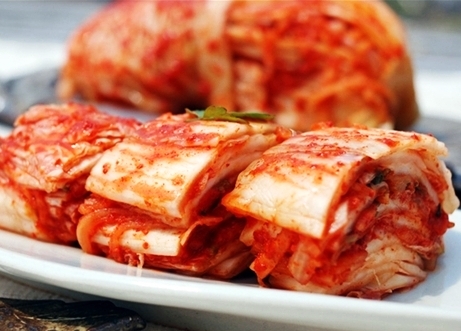
How to Ripen Kimchi
Everyone has a different preference as to when Kimchi(김치) tastes the best – some love eating freshly made, raw kimchi (kind of tastes like a salad); some love eating it when it is just perfectly ripe and then there are those who love sour kimchi (신김치 shin kimchi) which has basically over fermented and obviously tastes quite sour. But one thing is for sure – no one likes the stage when it is in the in-between stages of being raw and ripe. Kimchi really does not taste good at all when it is in the process of getting ripe – I had an aunt who used to call this the time when kimchi has gone CRAZY! And you certainly don’t want to eat the kimchi when it’s crazy! 🙂 So here’s how to ripen Kimchi and avoid CRAZY kimchi.
Since most of us now buy kimchi from the store, let me first write about the best way to eat a store bought kimchi. Too often, I hear people say that the kimchi served at our house tastes great, but when they try the same brand themselves, they think it doesn’t taste nearly as good. I realized it was because they don’t take the time to ripen it properly and then also forget to serve it cold (right out of the fridge). I found that most kimchi (even the poorly made ones) will taste quite palatable when they have had time to ripen properly.
Now, the hard part about buying kimchi from a store is that it is hard to tell at what stage of the fermentation process they are in. One clue is the appearance of the vegetables. They will look more shriveled up if they are further along in the fermentation process. And the chances are that it will also have lost a bit of the juice because the content will start to bubble and balloon up when it ferments which ends up usually overflowing out of the jar. This is actually too bad because kimchi should always be immersed in its own juices for it to taste the best.
The best way is to buy the freshest kimchi possible and bring it home and ripen it from the beginning. But this is usually not possible…So far, I have found the best tasting kimchi that you can buy are actually the ones that are directly imported from Korea (종가집Jongajip is my favorite). It is expensive but worth it in my opinion as long as it hasn’t traveled too far or stayed on the shelf too long at your store. Other than that, the next best thing is to try to buy kimchi that is made locally if it’s available (less chance of it over ripening) and when you bring it home, open it, smell it or better yet, taste it. If your store has a fast turnaround, it is probably in the “crazy” stage.
If it’s already fully ripe, put it in the fridge in the coldest possible setting. If it’s not yet fully ripened and you can wait, let it ripen in your fridge. This will take about 2 weeks in your fridge. Also note that the juice may overflow so either move the kimchi into a bigger container or take some out (1/5th) and leave some room for the kimchi to expand. If your kimchi is still very fresh, not at all ripe and you need to eat it quickly, you can ferment it at room temperature.
In the summer, Kimchi will ripen in 12 ~ 18 hrs and in cooler weather it can take about 24 – 48 hrs. Just check every 4-6 hrs.
If this is all too much info for you to digest, I have a chart at the bottom of this post that can help you with the process. (Boy, it’s been ages since I drew up a flowchart…brings back memories from my college days of hand drawing the charts using graphic rulers..)
What is the ultimate best way to ripen or ferment kimchi?
The most delicious and fantastic kimchi is made when it is fermented the old fashioned way…In a traditional Korean clay jar, buried in the ground in winter time. Even though the ground freezes in the winter, the jar and the saltiness of the kimchi keep it from freezing completely. This is called 김장김치 (kimjang kimchi). Kimjang kimchi is usually made around the ‘start of winter’ (입동 ipdong) in the lunar calendar which is just about now (Nov 7-8th in Gregorian calendar).
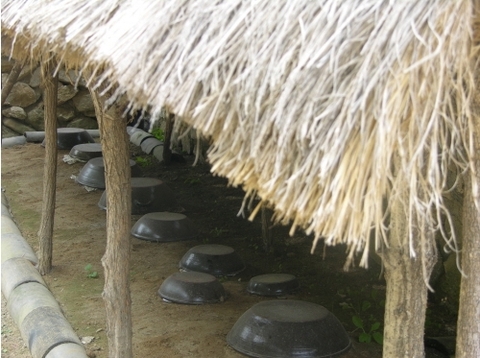
I remember when I was a kid, we spent days preparing and making kimjang kimchi so that it could last us through the winter and into spring. We first dug big holes in the ground big enough to hold our huge clay jars (so big that a child can fall in). In the meantime, we spent the day washing and brining 100+ napa cabbages and also preparing the ingredients for the stuffing. The next day we took these salted napa cabbages and inserted the stuffing in between each cabbage leaf. It was an enormous amount of work but boy…was it worth it. All winter long, we got to eat these amazingly crunchy and zingy and sometimes even ever so slightly frozen kimchi that came out of these jars in the ground. So why was it so tasty?
According to research, when it is buried in the ground, the temperature remains quite constant – at 32 – 35 F all winter long. At this temperature it takes about 20 days for the kimchi to fully ripen but it is definitely worth the wait.
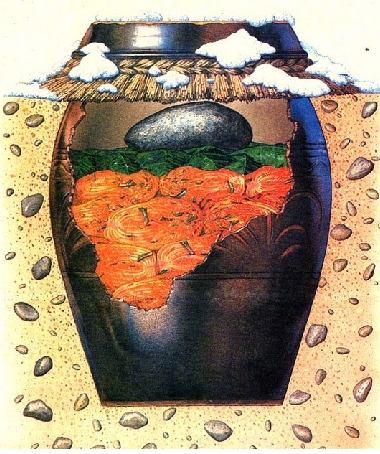
The clay jars are glazed to hold the moisture in but it can still breathe which allows just the right amount of air circulation to take away any heat produced from the fermentation (keeping the temperature stable). It also keeps the air tight enough for the bacteria to not grow too fast which helps the kimchi maintain its peak flavor for a longer period. The history of kimchi can be dated back almost 2000 years to the Goguryo Dynasty according to some historians, so you can see how long Koreans had time to refine the technique of kimchi making.
Since most Koreans now live in apartments and have no backyards to bury the jars, they have invented what is called a kimchi refrigerator. This fridge is different from the conventional refrigerator because the interior walls of the fridge are cooled instead of the air which helps to keep the interior at a more constant temperature. I own one and I have to say it is the next best thing to having your own kimchi jar in the ground. It even has temperature options for fermenting and then just storing it to prolong its freshness.
How to tell if Kimchi is ripe and ready to eat?
When a kimchi is not fully ripe, you are able to smell and kind of taste the individual ingredients – garlic, cabbage, radish, green onion, fish sauce, etc – as they have yet to fully integrate with each other. When it is fully ripened, the tastes of all the ingredients are well blended together and there is full flavor embedded in each cabbage leaf or vegetable pieces. There is also a slight sour taste with an added zing at the end. You can also no longer smell the raw ingredients individually but rather have a combined, wonderful slightly stinky smell that is unique to kimchi. Below is the chart that I promised earlier –
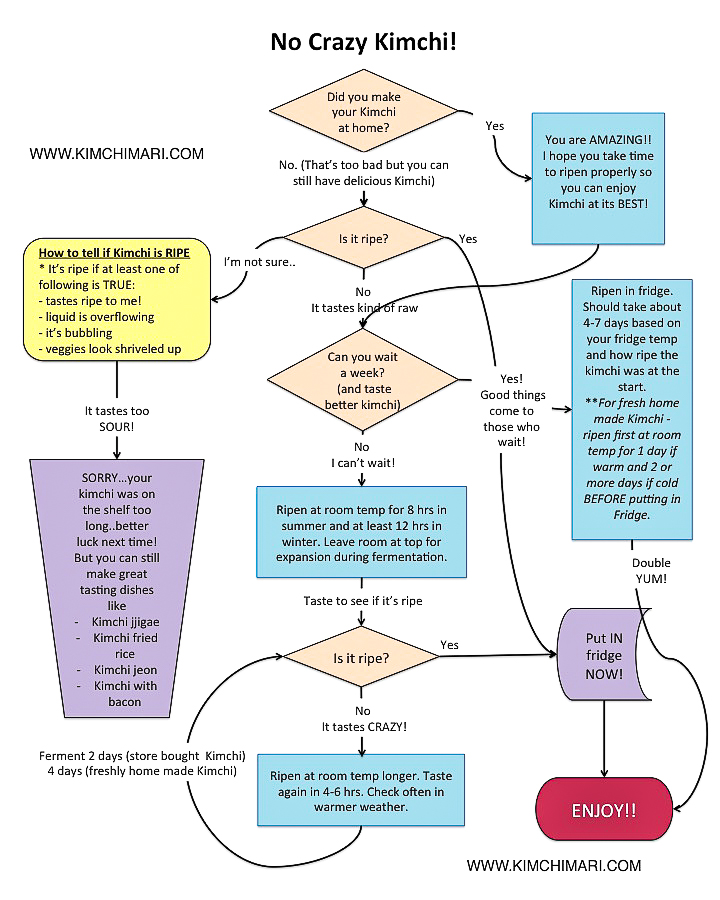
So how long can I store Kimchi in the fridge?
When stored at the ideal temperature that’s close to the freezing point of 32 F (-1 to 0℃), kimchi will keep for 3 months or more.
If the temperature of your fridge is higher (which is normally the case), it will probably keep for at least a month or more. Kimchi will start to taste just too sour when it starts to go bad – at which point, the best way to eat them is by cooking them by making Kimchi Jjigae, Budae Jjigae, Kimchi soft tofu stew, Kimchi fried rice and of course Kimchi Mari! Kimchi will sometimes go bad – it will have this whitish kind of film when it has been really too long and will also smell very pungently sour. You don’t want to eat it at this stage.
Can I take my Kimchi out from the refrigerator and leave it on the counter again to ripen further?
YES! Whether you have store-bought kimchi or made your own kimchi, you can take Kimchi out of the refrigerator at any time and let it ripen or sour further.
If it’s not ripe enough, it will take a long time to ripen in the fridge.
The whole point about my flow chart above was for people who have store-bought Kimchi. You may think it’s ready to eat because you got it from the store, but many times they are not fully ripe and therefore doesn’t taste as good.
Well, I hope this was helpful. Please share this info so that more people can learn how to ripen Kimchi properly and enjoy it at its best!
Take care,
XOXO
JinJoo
PS – if you want to learn more about Kimjang, here are two posts that teach you all about it!
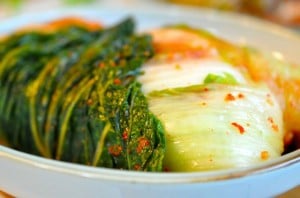 kimjang kimchi
kimjang kimchi- Kimjang Day: Part 1- How it’s done – I share my experiences and tips learned while doing Kimjang with my mother-in-law.
- Kimjang Day: Part 2 – Ingredients and Tips

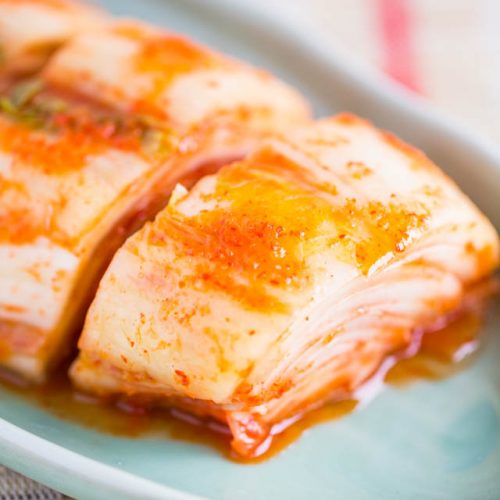
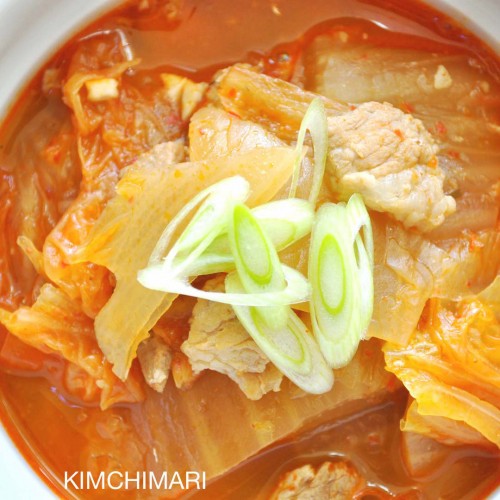
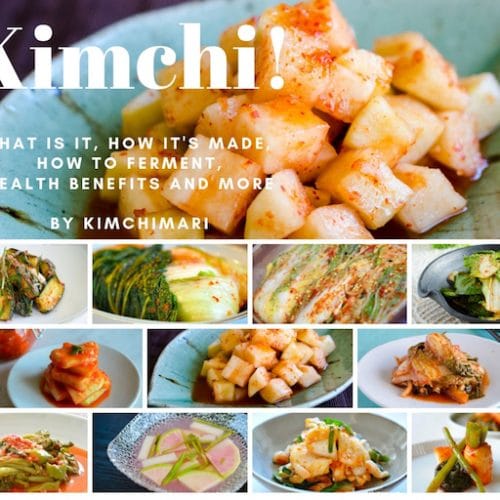
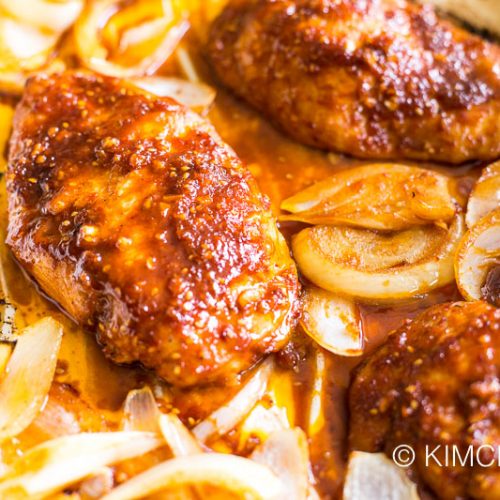
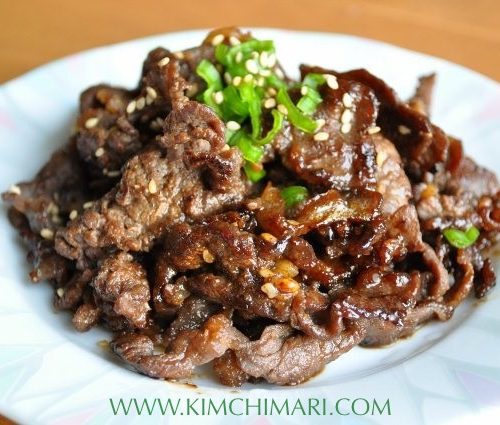
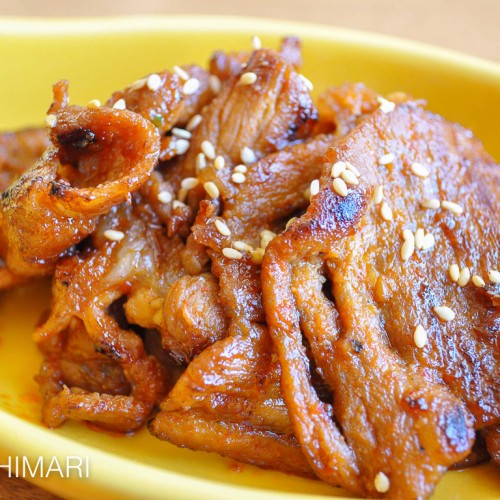
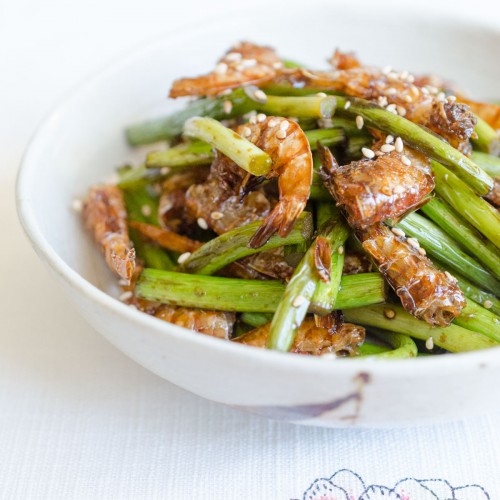
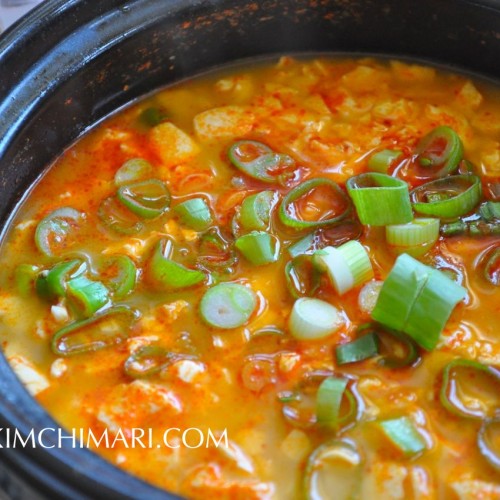
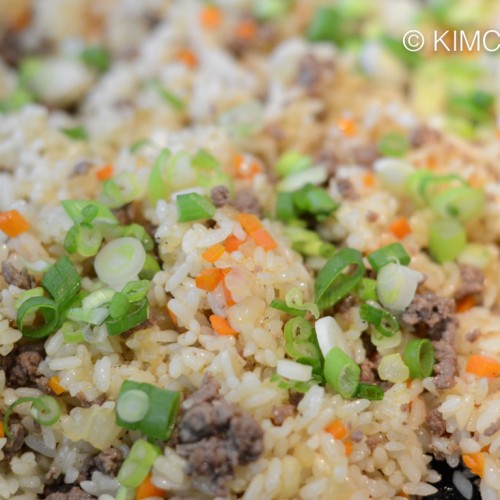

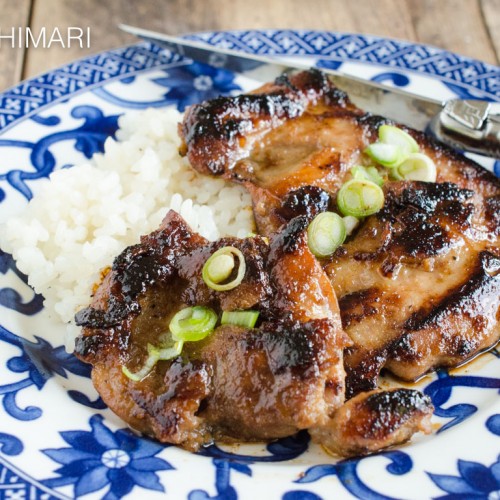








I am making kimch in an air-lock jar. It has been sitting on my kitchen counter for four days. The kimchi is fully submerged in the brine. My concern is that I see no air bubbles. I have always seen bubbles when I have made the kimchi in the past. Does this mean the kimchi is not fermenting? I am considering giving it another few days to ferment at room temperature before putting it in the fridge…or just throw it out if it is not fermenting and start over.
Are you sure there are no bubbles at all? Can you open the jar and smell and taste it to see if it has started to ferment? Based on how it smells and tastes, you can leave it out longer on your counter or put in the fridge. But usually they will ripen by 4 days unless your home is very cold. And I have not seen Kimchi that does NOT ferment. I have seen ones where it takes a really long time but they will eventually ferment. I’m not totally sure what kind of air-lock jar is but I don’t think it should affect the fermentation so much. And what recipe did you use?
I am making kimch in an air-lock jar. It has been sitting on my kitchen counter for four days. The kimchi is fully submerged in the brine. My concern is that I see no air bubbles. I have always seen bubbles when I have made the kimchi in the past. Does this mean the kimchi is not fermenting? I am considering giving it another few days to ferment at room temperature before putting it in the fridge…or just throw it out if it is not fermenting and start over.
Reply: There were no bubbles. I had to use Himalayan pink salt because I was out of regular sea salt. I also packed the kimchi pretty firmly into the jar, and added ceramic fermenting plates over it to hold it under the brine…like I always do. I just did as you advised and smelled it and tasted it. It smells and tastes great – a little sour, a bit tangy, a bit spicey. When I stuck the fork into it, a LOT of bubbles came up into the brine, and the brine level dropped down into the kimchi a bit. I put the plates back onto the kim chi and the air lock lid back on. Tonight, I’ll change the lid and put the kimchi into the fridge. I think it’s going to be great. Thanks!
I tasted my kimchi after 2 days in the counter and 2 days in the fridge. It smelled mostly like bad cabbage and was not spicy. I added some chili paste and a tiny bit offish sauce and returned to fridge…was this safe to do?
Hmm.. well, usually it’s not a good idea to add things AFTER it has been fermenting for couple days. It is most likely going to taste strange after. Also, we usually don’t add chili paste (gochujang) to kimchi. I mean it should be still safe to eat, just not sure how tasty it will be. Next time, you should taste the kimchi BEFORE you start fermenting – maybe after couple hours for all the chili powder to come to flavor. It’s best to adjust within the first couple hours than to do it after. Hope it helps. Good luck!
This flow chart is awesome! Thank you!
You are so welcome! Glad to hear it. Thank you.
So we make kimchi, and usually ripen a few tubs at different lengths. 1, 2 and 3 days out. I love mine sour and we make lots of soup, so I left one huge tub out at room temp to get extra sour, but lost count! Turns out now it’s been 5 days! Eeek! Can I eat it? It’s been relatively coolish weather. I swear it smells off but my husband says it tastes great and that the smell is just the new plastic tub. I was all set to throw the whole thing out but maybe we can at least only use it cooked to be safe? What do you say? Is it totally fine?
Unless it’s gotten slimy and moldy it should be fine. You can def cook it. Good luck.
I am working/living in a village in West Africa with no electricity (hence no fridge, but very hot weather), can I still produce good tasting Kimchi without having it go through the fridge? How long would it keep?
Without a fridge in hot weather, kimchi will not keep for very long. It will ripen in day or two and will only be ok for couple more days or maybe at most a week. But most importantly Kimchi will taste best when it comes out from a cold fridge so I am afraid you will not be able to get a great tasting kimchi.
Thanks for your post. I plan on fermenting it in an onggi on my porch outside and then transfer to the fridge when it’s ready. Can I store extra in an air tight container in the freezer?
Kimchi does not freeze well. The freezing process will make the cabbage mushy. If you want to store extra, I would just put it in the fridge a bit sooner and let it ferment very slowly until you are ready to eat it. Hope that helps.
ORRRRRRRRR
u could ferment it 2-3 days. Then jar it or vacuum seal it, and put it in the fridge at 33-34F. that would give it the longest shelf life. It doesn’t freeze it, but keeps it at the lowest temperature possible. The removal of all oxygen should help prevent the fermentation process from continuing, in addition to the super low temperature. Also. I think u can let the fermentation process go as 2-4 days until the kimchi is ripe, and I think there is a way to pasturize it.
In the event you pasturize it you effectively kill all the bacteria. So the fermentation process stops and all that’s left is the flavour. Then u remove all oxygen and it becomes preserved for the longest period of time at the lowest temperature, 33-34F.
also some considerations: what if you dehydrated all the kimchi to the absolutely MOST DRY (zero moisture). then froze it at extremely cold temperatures -100-200F. I bet you that the cabbage and foods would retain their integrity, and when rehydrated it would have the same flavour and texture as fresh 🤔
just a theory 🧐
Love all the different ideas! Kind of going backward.. dehydrating of kimchi is already being done in Korean Instant Ramen noodles. e.g. Nongshim Kimchi Noodle bowls and it def. is not the same as fresh but good enough. I guess removing oxygen is def. a way to preserve for a long time – if that’s your goal. I feel though a big part of having Kimchi is tasting it thru all the diff. fermentation process and enjoying every stage. Also, having live cultures is a big part of kimchi that gives it the wonderful flavor and health benefits so unless you are just wanting it purely just for taste at one stage, I’m not sure it’s something I would want to do. 🙂 But then, that’s just my opinion. 😉 Thank you for the great comment though!